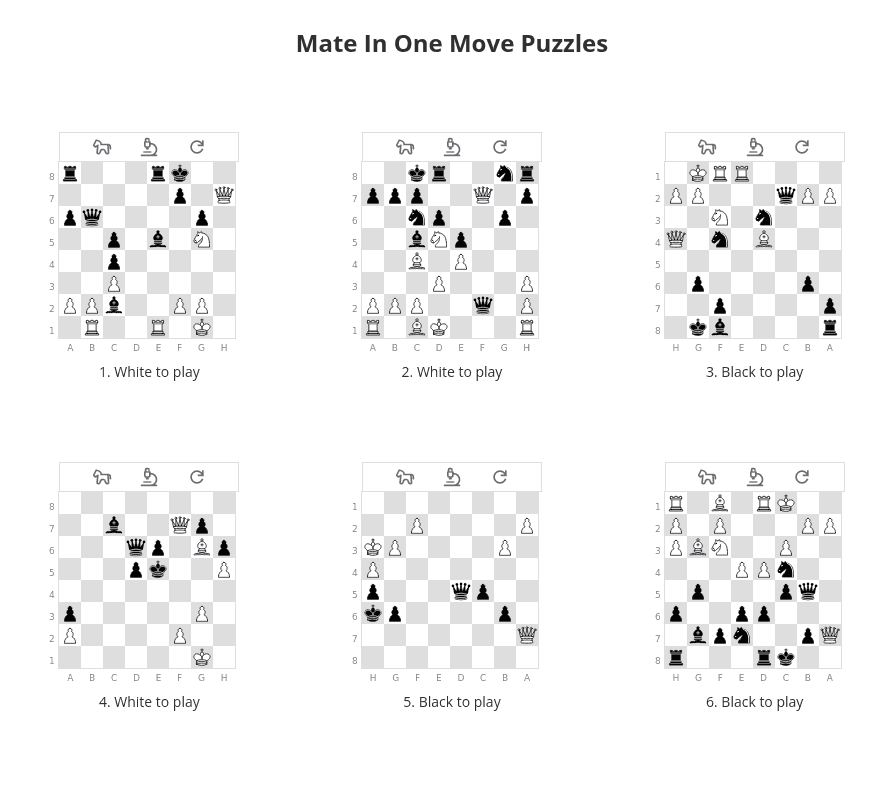Here is how the chess puzzle print page looks like. You can customize this
chess puzzles page to your liking and hit Print or useCtrl + p.

Chess puzzles, often referred to as tactics puzzles, are an invaluable
tool for chess players of all levels to sharpen their tactical skills and
improve their overall game.
These puzzles present players with a specific chess position and task them
with finding the best move or sequence of moves to achieve a favorable
outcome, such as winning material, delivering checkmate, or gaining a
positional advantage.
Chess puzzles come in various forms, including mate-in-one puzzles, where
the objective is to find the move that immediately delivers checkmate;
tactical combinations, where players must calculate a series of moves to
exploit weaknesses in the opponent's position; and defensive puzzles,
where the goal is to find the best defensive move to neutralize the
opponent's threats.
Solving chess puzzles helps players develop crucial skills such as
calculation, pattern recognition, visualization, and decision-making under
pressure.
Puzzles also reinforce important tactical motifs and principles, such as
forks, pins, skewers, discovered attacks, and deflections, which players
can then apply in their own games.
Additionally, solving puzzles provides immediate feedback on one's
tactical abilities and helps identify areas for improvement.
Chess puzzles are not only educational but also enjoyable, offering a
stimulating mental workout and a sense of accomplishment when successfully
solved.
Whether done in books, online platforms, or mobile apps, incorporating
chess puzzles into one's training regimen is essential for any serious
chess player looking to enhance their tactical prowess and become a
stronger player overall.Chess puzzles, often referred to as tactics
puzzles, are an invaluable tool for chess players of all levels to sharpen
their tactical skills and improve their overall game.
These puzzles present players with a specific chess position and task them
with finding the best move or sequence of moves to achieve a favorable
outcome, such as winning material, delivering checkmate, or gaining a
positional advantage.
Chess puzzles come in various forms, including mate-in-one puzzles, where
the objective is to find the move that immediately delivers checkmate;
tactical combinations, where players must calculate a series of moves to
exploit weaknesses in the opponent's position; and defensive puzzles,
where the goal is to find the best defensive move to neutralize the
opponent's threats.
Solving chess puzzles helps players develop crucial skills such as
calculation, pattern recognition, visualization, and decision-making under
pressure.
Puzzles also reinforce important tactical motifs and principles, such as
forks, pins, skewers, discovered attacks, and deflections, which players
can then apply in their own games.
Additionally, solving puzzles provides immediate feedback on one's
tactical abilities and helps identify areas for improvement.
Chess puzzles are not only educational but also enjoyable, offering a
stimulating mental workout and a sense of accomplishment when successfully
solved.
Whether done in books, online platforms, or mobile apps, incorporating
chess puzzles into one's training regimen is essential for any serious
chess player looking to enhance their tactical prowess and become a
stronger player overall.